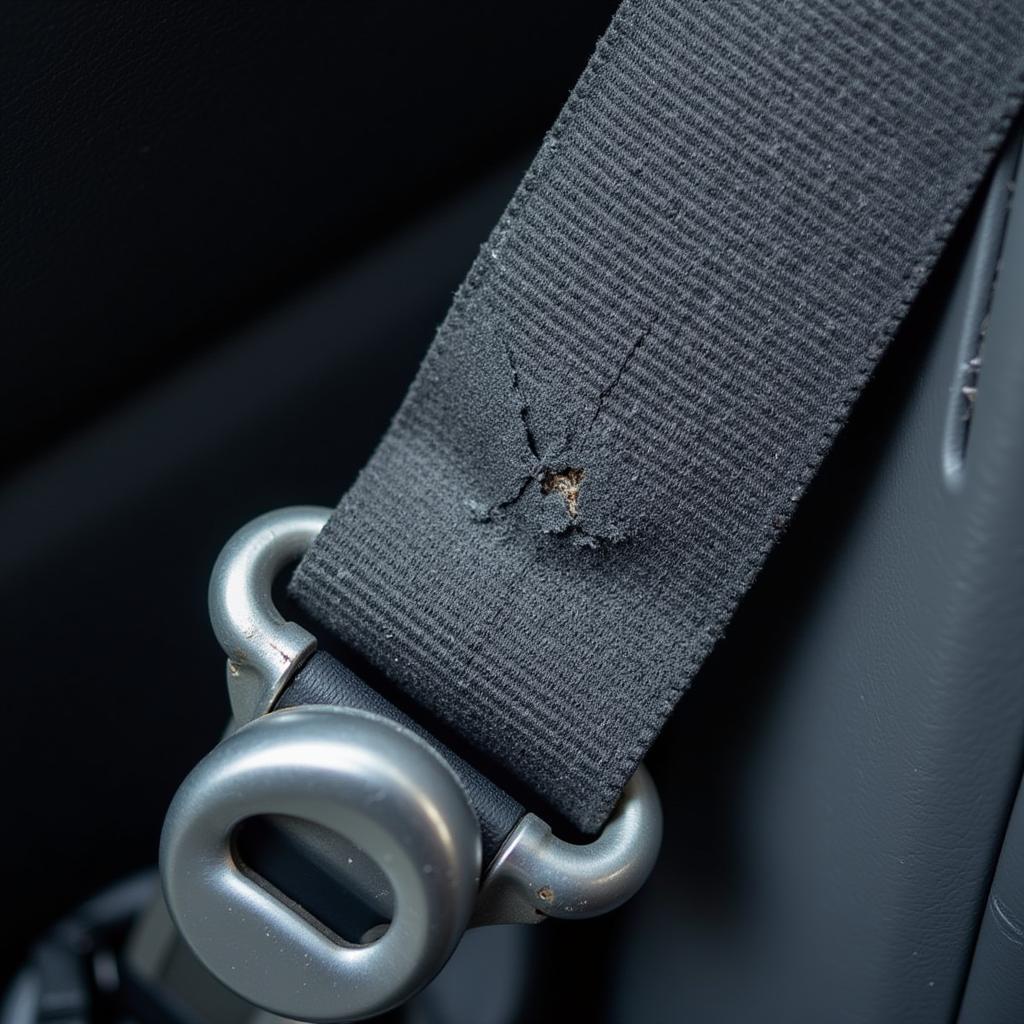A malfunctioning car seat belt is a serious safety hazard. If you’re experiencing problems with your seat belt, whether it’s failing to retract, locking up, or showing visible damage, addressing the issue promptly is crucial. While consulting a professional mechanic is always recommended for complex issues, this comprehensive guide will walk you through some common car seat belt repairs you might be able to tackle yourself.
 Common Car Seat Belt Problems
Common Car Seat Belt Problems
Identifying the Problem
Before diving into repairs, it’s essential to pinpoint the root cause of your seat belt malfunction. Here are some common problems and what they could indicate:
- Seat Belt Won’t Retract: This could be due to a twisted belt, a jammed retractor mechanism, or a weak spring within the retractor.
- Seat Belt Locks Up: A seat belt that locks up even with gentle movement might be experiencing issues with the locking mechanism itself. This could stem from dirt, debris, or a faulty sensor.
- Seat Belt is Frayed or Torn: Visible damage to the webbing compromises the seat belt’s integrity and requires immediate attention.
- Seat Belt Buckle Won’t Latch: This could be a sign of damage to the buckle mechanism or an obstruction preventing proper closure.
Gathering the Necessary Tools
Having the right tools on hand can make the repair process smoother. Here’s a list of what you might need:
- Screwdrivers (Phillips and flathead)
- Torx bit set
- Pliers
- Shop Vacuum (for cleaning debris)
- Replacement parts (if needed)
How to Repair a Car Seat Belt Retractor
The retractor is a common culprit in seat belt malfunctions. Here’s a step-by-step guide to inspecting and potentially repairing it:
- Access the Retractor: Locate the retractor, typically mounted on the side of the vehicle’s interior near the seat.
- Remove the Cover: Depending on your car model, you might need to pry open a plastic cover or remove some trim to access the retractor assembly.
- Inspect for Obstructions: Carefully examine the retractor mechanism for any debris, loose objects, or twisted webbing that might be hindering its movement.
- Clean the Mechanism: Use a shop vacuum or compressed air to remove any dust or dirt buildup.
- Test the Retractor: After cleaning, gently pull and release the seat belt to see if the retractor functions correctly.
Expert Insight: “Many seat belt retractor issues stem from simple obstructions. Regular cleaning and inspection can prevent more serious problems down the line.” – John Miller, Senior Automotive Engineer
How to Repair a Car Seat Belt Buckle
A faulty buckle can be a major inconvenience. Here’s how to address common buckle problems:
- Inspect the Buckle: Look for any signs of physical damage, dirt, or debris that might be preventing the buckle from latching or releasing properly.
- Clean the Buckle: Use a small brush, compressed air, or a cotton swab dipped in rubbing alcohol to clean the buckle mechanism.
- Check for Loose Parts: Examine the buckle for any loose or broken parts. If you find any, you’ll likely need to replace the entire buckle assembly.
Expert Insight: “Never force a car seat belt buckle. If it’s not latching smoothly, there’s likely an underlying issue that needs to be addressed.” – Sarah Thompson, Certified Automotive Technician
When to Seek Professional Help
While some car seat belt repairs are manageable for DIY enthusiasts, it’s essential to recognize your limitations. If you encounter any of the following, it’s best to consult a qualified mechanic:
- Airbag System Involvement: Tampering with seat belt components connected to the airbag system can have serious consequences.
- Extensive Damage: If the seat belt webbing is severely damaged, frayed, or torn, it’s crucial to have it replaced by a professional.
- Complex Mechanical Issues: If you’re unsure about a repair or encounter intricate mechanisms, seeking professional assistance is always the safest route.
Conclusion
Understanding how to repair a car seat belt can empower you to address minor issues and ensure the safety of yourself and your passengers. By following the steps outlined in this guide, you can troubleshoot common problems and potentially fix them. However, always prioritize safety and seek professional help when necessary. Remember, a functioning seat belt is non-negotiable when it comes to car safety.
FAQs
Can I replace a car seat belt myself?
While it’s technically possible, it’s generally not recommended to replace an entire seat belt assembly yourself unless you have advanced mechanical skills. Seat belt replacement often involves working with sensitive safety systems, and improper installation can compromise your safety.
How much does it cost to fix a car seat belt?
The cost of car seat belt repair can vary widely depending on the extent of the damage and your car model. Minor repairs, such as cleaning or replacing a buckle, might cost between $50 to $150. However, more extensive repairs or complete seat belt replacements can range from $150 to $500 or more.
Need More Help?
Have other car repair questions? Check out these resources:
For personalized assistance and expert advice, reach out to our team:
- WhatsApp: +1(641)206-8880
- Email: [email protected]
Our dedicated customer support team is available 24/7 to address your car repair concerns.

